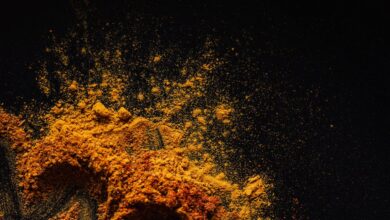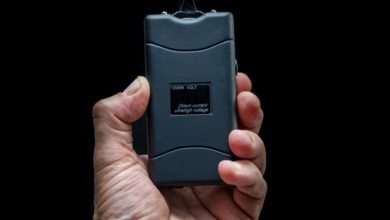How To Dispose Pepper Spray: A Complete Guide
KEY TAKEAWAYS
Pepper spray is the go-to self-defense tool that can be extremely effective in warding off potential threats. However, there may come a time when you need to dispose of pepper spray for various reasons.
Whether it’s because the canister has expired, you no longer need it, or you’re simply looking for a safe and responsible way to get rid of it, this comprehensive guide will provide you with all the information you need on how to dispose of pepper spray properly.
Why Proper Disposal of Pepper Spray is Important
Proper disposal of pepper spray is crucial to ensure the safety of both humans and the environment. Pepper spray contains a powerful chemical called oleoresin capsicum (OC), which can cause irritation and respiratory distress.
If not disposed of correctly, pepper spray can contaminate water sources, harm wildlife, and even cause injury to waste management personnel. By following the right methods for disposal, you can minimize the potential risks and ensure a safe environment for all.
Safety Precautions Before Disposal
Before you start the disposal process, it’s essential to take some safety precautions to protect yourself and others from accidental exposure. Follow these guidelines to ensure a safe disposal experience:
-
Wear Protective Gear: Put on gloves, safety goggles, and a face mask to shield yourself from any potential contact with the pepper spray.
-
Work in a Well-Ventilated Area: Perform the disposal process outdoors or in a well-ventilated area to avoid inhaling any fumes.
-
Keep Children and Pets Away: Ensure that children and pets are kept at a safe distance from the disposal area.
-
Read the Canister Instructions: Familiarize yourself with the manufacturer’s instructions on the pepper spray canister for any specific disposal guidelines.
How to Dispose Pepper Spray Canisters
When it comes to disposing of pepper spray canisters, it’s important to follow the recommended guidelines to ensure safe and responsible disposal. Here’s a step-by-step process to help you dispose of pepper spray canisters properly:
-
Empty the Canister: To empty the pepper spray canister, point it away from yourself and others and press the actuator button until no more spray is released. It’s crucial to do this outdoors or in a well-ventilated area.
-
Remove the Actuator: After emptying the canister, remove the actuator from the top. This will prevent accidental discharge during the disposal process.
-
Remove the Canister Cap: Take off the canister cap if it is removable. This will ensure that the canister is completely depressurized.
-
Check Local Regulations: Research local regulations regarding the disposal of pepper spray canisters. Some areas may have specific guidelines or designated drop-off locations.
-
Recycle or Dispose: Depending on local regulations, you can either recycle the empty canister or dispose of it in the regular trash. If recycling is an option, ensure that the canister is completely empty and free of any residual spray.
Remember, it’s essential to always check with local authorities or waste management facilities for specific guidelines on the disposal of pepper spray canisters in your area.
Disposing of Expired or Unused Pepper Spray
If you have expired or unused pepper spray that you no longer need, it’s crucial to dispose of it safely. Follow these steps to properly dispose of expired or unused pepper spray:
-
Check the Expiration Date: Locate the expiration date on the pepper spray canister. If it has expired, it’s time to dispose of it.
-
Empty the Canister: Empty the expired or unused pepper spray canister by following the steps mentioned earlier.
-
Secure the Canister: Ensure that the canister is securely sealed to prevent any accidental discharge during disposal.
-
Contact Local Authorities: Contact your local law enforcement agency or fire department to inquire about their guidelines for disposing of expired or unused pepper spray. They may provide specific instructions or designated drop-off points.
-
Follow Local Guidelines: Adhere to the guidelines provided by the local authorities or follow any specific disposal methods they recommend.
Properly disposing of expired or unused pepper spray ensures that it doesn’t end up in the wrong hands or pose any risks to individuals or the environment.
Disposing of Pepper Spray on Clothing
In situations where pepper spray accidentally gets on clothing, it’s crucial to handle it carefully to avoid further exposure or contamination. Follow these steps to safely dispose of clothing contaminated with pepper spray:
-
Remove Contaminated Clothing: Take off the clothing that has come into contact with pepper spray.
-
Avoid Touching Exposed Areas: Be cautious not to touch the areas of clothing that have been in direct contact with the pepper spray to prevent further exposure.
-
Isolate and Seal Clothing: Place the contaminated clothing in a sealed plastic bag or container to prevent any transfer of the pepper spray.
-
Wash Clothing Separately: Launder the contaminated clothing separately from other clothing items. Use a mild detergent and follow the care instructions on the clothing label.
-
Dispose of Gloves: If you used gloves during the removal process, dispose of them properly, following local guidelines for hazardous waste disposal.
By following these steps, you can effectively contain and dispose of clothing that has been exposed to pepper spray.
Disposing of Pepper Spray in an Emergency
In rare emergency situations, you may need to dispose of pepper spray quickly. Here’s what you can do if you find yourself in such a scenario:
-
Contact Local Authorities: Dial emergency services immediately if you need to dispose of pepper spray due to an emergency situation, such as accidental discharge or exposure.
-
Follow Their Instructions: Provide accurate information to the emergency responders and follow their instructions for safe disposal. They are trained to handle such situations effectively.
-
Do Not Panic: Stay calm and focused while awaiting instructions. Panic can lead to hasty decisions that may exacerbate the situation.
-
Evacuate if Necessary: If instructed to do so, evacuate the area to ensure your safety and the safety of others.
Remember, in emergency situations, it’s crucial to prioritize personal safety and follow the guidance of trained professionals.
FAQs
1. Can I throw pepper spray in the trash?
No, you should not throw pepper spray in the regular trash. Pepper spray canisters contain pressurized chemicals that can be dangerous if not handled properly. It’s important to follow the specific guidelines provided by local authorities or waste management facilities for the disposal of pepper spray canisters in your area.
2. Can I flush pepper spray down the toilet?
No, flushing pepper spray down the toilet is not recommended. Pepper spray contains chemicals that can be harmful to the environment and may contaminate water sources. It’s best to follow the proper disposal methods outlined by local authorities or waste management facilities.
3. Can pepper spray explode in a fire?
Pepper spray canisters are designed to withstand high temperatures and are unlikely to explode in a typical fire. However, it’s important to exercise caution and avoid exposing pepper spray canisters to extreme heat or open flames, as they can potentially rupture or release their contents.
4. How long does pepper spray last in the air?
The effects of pepper spray in the air can last for varying durations, depending on factors such as the concentration of the spray, the size of the area, and ventilation. In general, the effects can linger for several minutes to over an hour. It’s crucial to leave the affected area and seek fresh air if you are exposed to pepper spray.
5. What are the environmental concerns associated with pepper spray?
Pepper spray contains chemicals that can be harmful to the environment. When pepper spray is not disposed of properly, it can contaminate water sources, harm wildlife, and have adverse effects on ecosystems. It’s essential to follow the recommended disposal guidelines to minimize any potential environmental impact.
6. Is it legal to dispose of pepper spray?
It is legal to dispose of pepper spray; however, the method of disposal may be regulated depending on your location. To ensure compliance with local regulations, it’s advisable to contact local authorities or waste management facilities to obtain accurate information on the proper disposal procedures for pepper spray in your area.
Conclusion
Knowing how to dispose of pepper spray safely and responsibly is crucial for the well-being of both individuals and the environment. By following the guidelines outlined in this comprehensive guide, you can ensure that pepper spray is disposed of in a manner that minimizes risks and potential harm.
Remember to always adhere to local regulations and consult with the relevant authorities or waste management facilities for specific guidelines in your area.
Learn more about the cost of pepper spray in the market and where you can get them legally from our resources at Security Forward.





